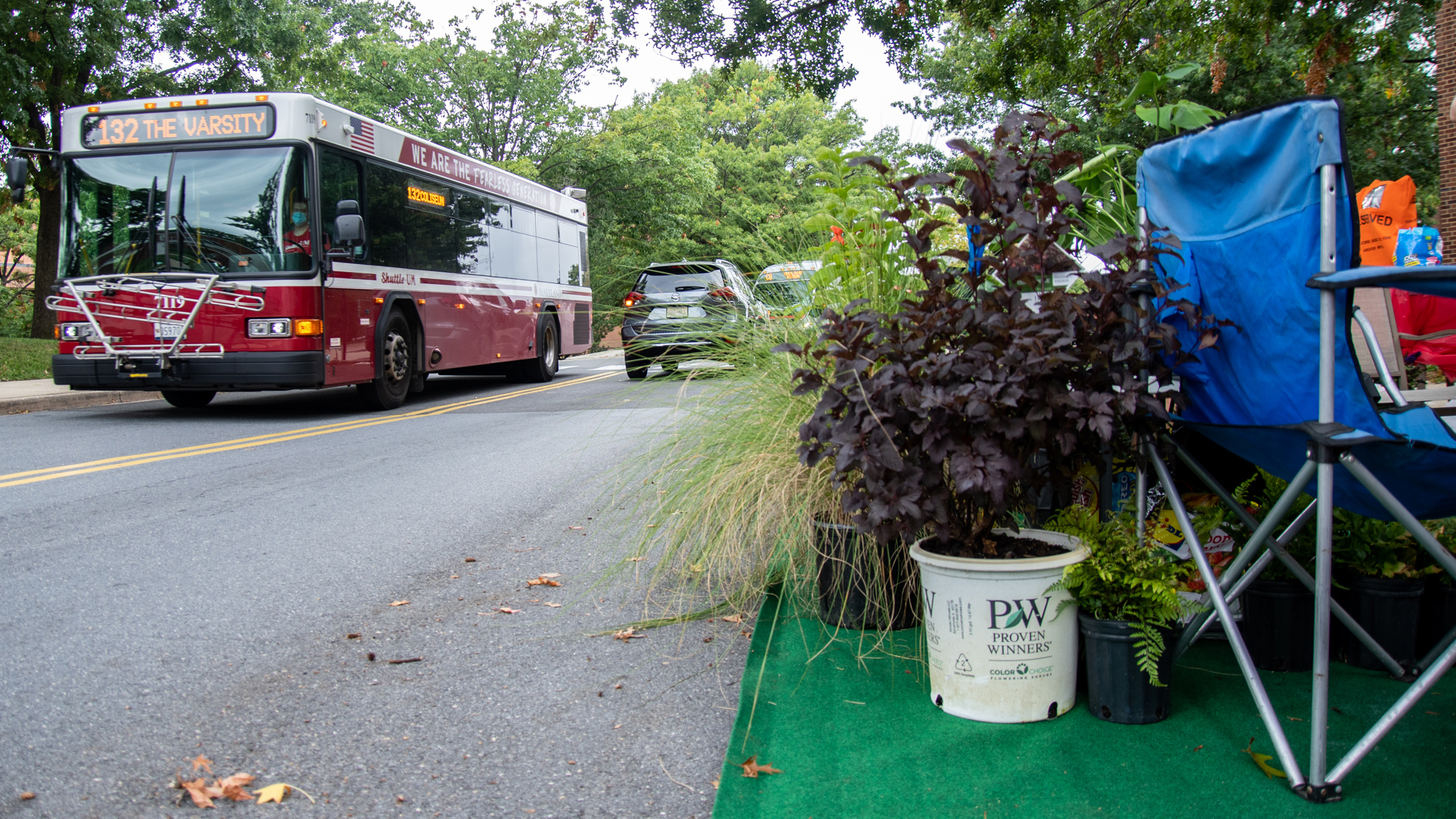A green oasis among dorms and academic buildings — filled with turf, potted plants, chairs and drink dispensers — replaced a pair of parking spots by Queen Anne’s Hall as part of a Friday exhibition.
The converted space was for PARK(ing) Day, a day-long event a student landscape architecture club at the University of Maryland held to raise awareness about public green spaces’ role in combating climate change and enhancing communities.
The setup was the Student Chapter of the American Society of Landscape Architecture’s take on a global event where parking spots are repurposed as mini parks to encourage the development of green spaces in urban areas.
Their goal was to simulate a city parklet that anyone walking by could use. SASLA wanted to educate passersby on combating higher-than-average temperatures in urban areas due to buildings that absorb heat — called the urban heat island effect — by planting trees.
“It’s an amazing thing to be able to just fit so much stuff into such a small space,” said SASLA’s president Teddy Ziolkowski, who is a senior landscape architecture major. “That’s something that’s really important … to be able to use every square foot possible in our cities to get the most out of it.”
[College Park residents find solace in gardening amid COVID-19]
Green spaces are also helpful for mental health, said Javiera Diaz-Ortiz, a junior landscape architecture major and SASLA’s secretary.
“Especially for students on campus, vegetation has proven to reduce stress … it’s just a lot of different benefits combined together,” she said.
Because of an abundance of vegetation across its 1,000-plus acres, the campus was designated an arboretum and botanical garden in 2008. Ziolkowski said SASLA collaborates with arboretum leadership to plant and weed around the campus.
From the Community Learning Garden to various quads and plazas scattered across campus, the university also houses several green spaces complete with trees and flowerbeds that students can use.
The club has held an annual PARK(ing) Day at this university since 2017, with different themes each year, according to Ziolkowski.
The event began in San Francisco in 2005, when an art studio created a temporary green space in an area of the city that did not have many community areas, Ziolkowski said.
In 2020, the club could not stage an in-person PARK(ing) Day because of the pandemic, said McKenzie Fei, a junior landscape architecture major and SASLA’s treasurer. Instead, they held a design competition where club members submitted ideas for a repurposed parking space. The designs were displayed in the club’s newsletter.
The return to an in-person event this year helped more people — about 100, Ziolkowski estimated — learn the message behind PARK(ing) Day, Fei said.
“Most people have never heard of it, especially because landscape architecture is such a small major,” Fei said. “Being in person was a good opportunity for people to learn about those things.”
Putting an in-person PARK(ing) Day together did not come without difficulty.
[These UMD groups fought to keep campus green spaces alive through COVID-19]
SASLA began looking into the process of renting out parking spots over the summer, but team meetings only began at the start of the semester. Gathering club members each Monday was difficult given classes and holidays, Ziolkowski said.
Friday’s rainy, humid weather also put a damper on the exhibit, as did people’s busy schedules.
However, the free lemonade and candy that the club handed out enticed people to stop by on their way to classes, Diaz-Ortiz said.
“I think for the next year we’re going to try to figure something out to make the space more appealing,” she said.
As the club looks forward to next year’s event, Fei hopes those who were involved in PARK(ing) Day learned more about green spaces.
“It’s a lot healthier for the well being of people and the environment when there’s green spaces,” she said. “There’s a lot of opportunities for it to be incorporated into cities where it’s a functional place for people to maybe relax and rest but also benefits the environment.”



